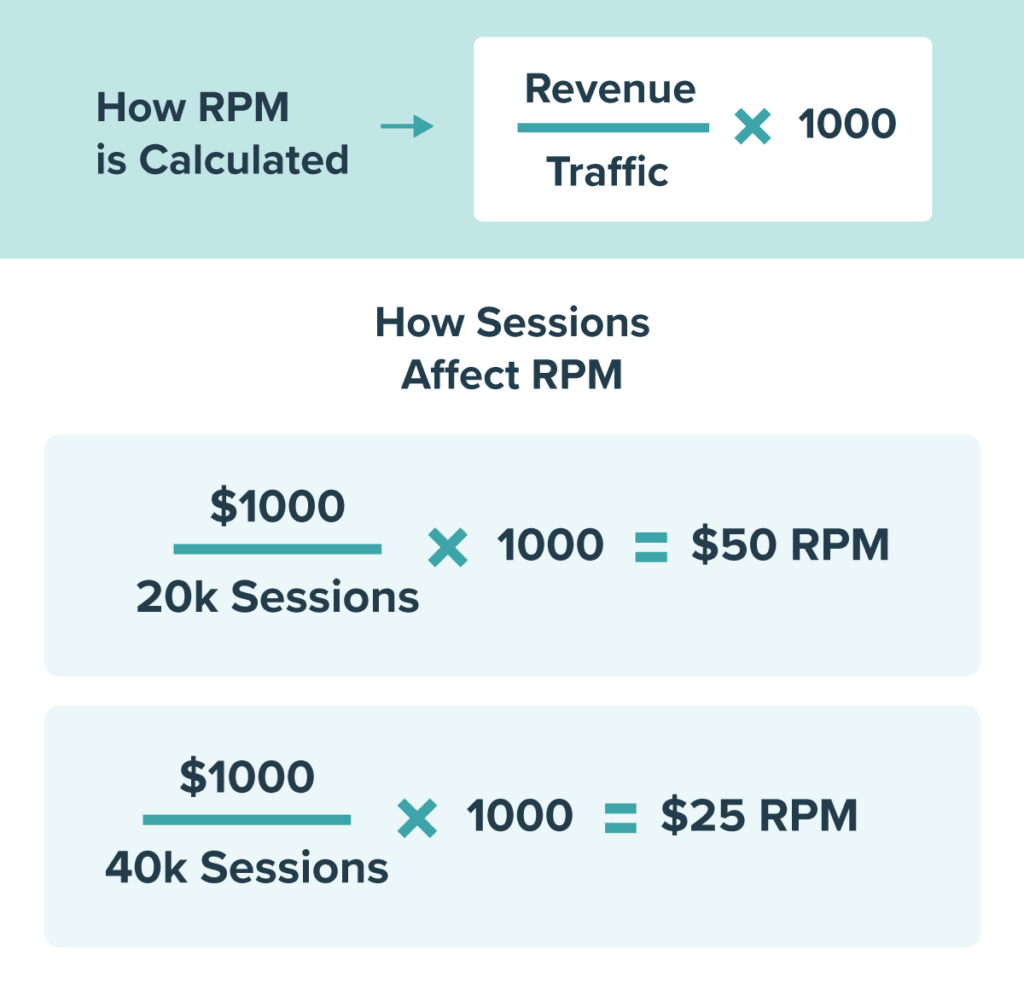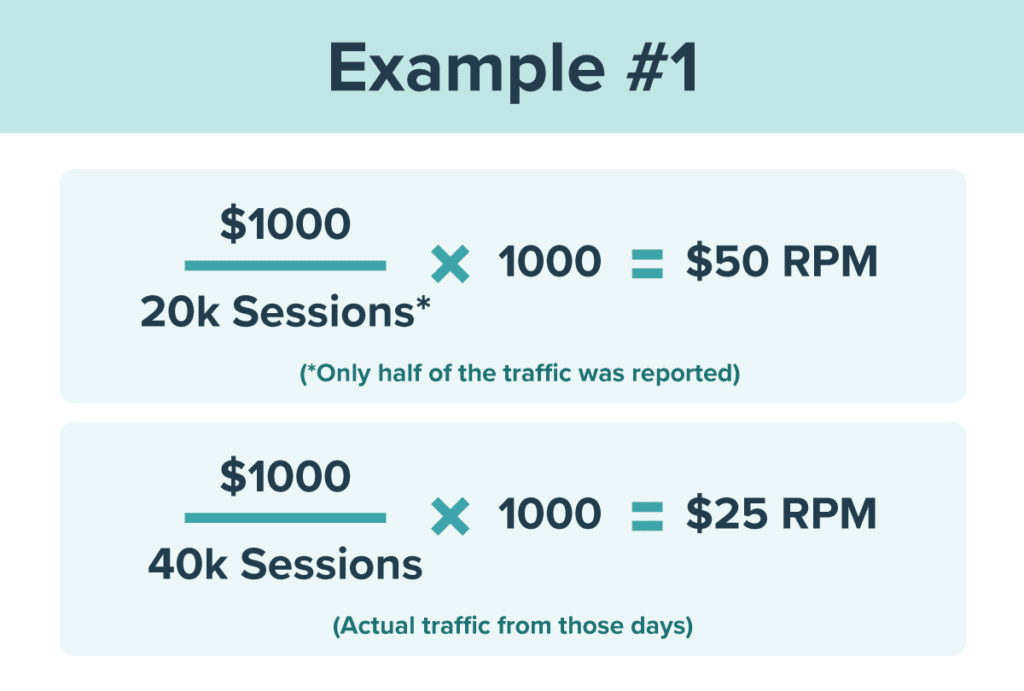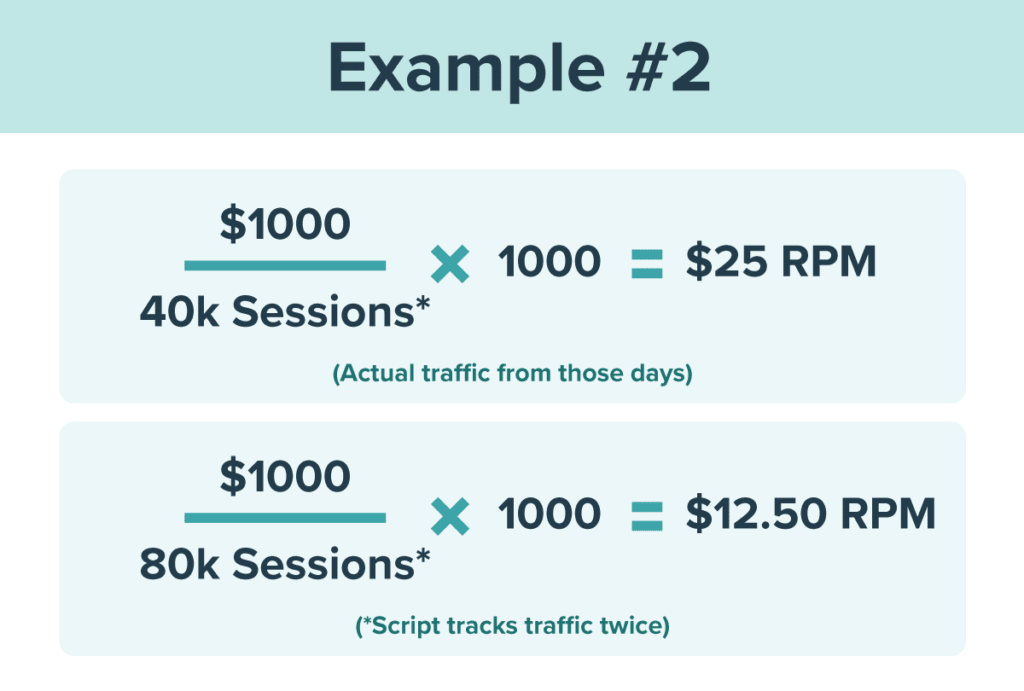How Will Google Analytics 4 Affect RPM? Here’s What Publishers Need To Know


The July 1, 2023 Google Analytics 4 migration from Universal Analytics has turned the world a bit upside down for publishers across the industry, and the effects reach beyond checking daily metrics.
Many publishers are struggling to measure year-over-year performance, learning new definitions for common terms (looking at you, Sessions and Engaged Sessions), and trying to figure out how to update and reconnect tools.
The experts at Mediavine are working alongside you to navigate this bumpy change! In this post, I’m breaking down:
GA4 will certainly affect RPM, but not in the way you might think!
To understand how your RPM will be affected, let’s first revisit RPM.
We’ve written several articles on RPM over the years, but it’s been a while, and new analytics are always a great excuse to review.
RPM (revenue per mille) is a unit of measurement. Revenue per 1000 is what we are measuring with RPM, but from there, we have to establish per 1000 of what exactly.
At its core, RPM is just a basic math equation:
Revenue / Traffic * 1000 = RPM
Many of you already know these details, but some of the following questions are common, even with experienced publishers. Let’s break it down and connect more of the dots.
➡️ If RPM goes up, that does not necessarily mean you made more money.
➡️ If RPM goes down, that does not mean you made less.
➡️ If RPM is displaying as $0 or appears as a flat line on the graph, that does not have to mean your money has flatlined as well.
We know this can be confusing. It seems like high RPM and/or higher traffic should equal more revenue, but that’s not always the case. We’ve got a handy help article about why RPM may drop during a traffic spike that dives into more detail. But the bottom line is this:
RPM is only a useful unit of measurement when the revenue and traffic parts of the equation are correct.
In the context of GA4, Google is now calculating Sessions differently. Here’s how:
Since the Traffic part of the RPM equation is slightly different in UA vs GA4, RPM will also be somewhat different.
For some publishers, sessions are tracking a bit lower in GA4. In that case, RPM will be higher because we are dividing revenue by fewer sessions.
If your sessions in GA4 are skewing higher than in Universal Analytics, RPM will be lower because you are dividing revenue by a higher number.

Let me explain why you don’t always make more money if your RPM increases.
Example #1: If your developer accidentally deletes your analytics code halfway through the day, and it is only replaced halfway through the next day, you’ll have two days that only report half of your traffic. All that traffic still existed — readers were still visiting your site like normal from various sources — but Google Analytics wasn’t recording it.
In this example, you’d divide revenue from ALL the traffic by half of the traffic that was tracked. As a result, RPM will look artificially high for both of those days. However, the amount of revenue stays the same regardless of what Google Analytics is tracking, because your revenue isn’t determined by Google Analytics.

Example #2: The same logic applies if RPM drops after accidentally doubling a tracking script. You didn’t receive double the traffic by tracking it twice. In this scenario, you’d divide revenue by 2X the traffic that visited your site, so RPM will look artificially low.

The reason is simple: Advertisers aren’t connected to your Google Analytics.
We connect your Mediavine Dashboard to analytics so we can combine your data with details about your ad revenue pulled from the ad server. The ad server is where all of the money details live.
If you never installed analytics, advertisers could still spend on your traffic. You just wouldn’t have a way to gain meaningful information about your revenue.
You can learn about S2S (Server-to-Server) and real-time bidding in detail here, but basically, a reader visits your site in their browser on a computer or mobile device, the browser talks to a server, then the server talks to the ad exchanges.
That browser action is why we care about cookies 🍪, the impending demise of those cookies, and why we built Grow.
Reminder: Use Grow now if you aren’t already! 2024 is just around the bend!
👍 Increase traffic, pageviews, and time on site.
👍 Increase REVENUE. Mediavine publishers using Grow have seen as much as a 47% lift to their revenue over time.
👍 Make it easier for readers to discover what they’re looking for.
👍 Encourage Bookmarks by making it easy for readers to save a post in one place and find it later on any device they use.
👍 Increase CTR
What will a new normal look like? This is where the real challenge lies.
Traffic varies day to day, month to month and year over year, so it can be challenging to gauge if today was much higher than yesterday, especially when we’re tracking a slightly altered version of today compared to yesterday.
If you started collecting GA4 data alongside Universal Analytics data prior to July 1, 2023, you can select a date range in GA4 and then select that same date range in UA. Compare the sessions reported and then calculate the percentage of difference.
I sampled three months from my site and found that GA4 is reporting higher than UA by between 2.8 – 6.5%. If you recalculate RPM using the formula (Revenue / Traffic * 1000 = RPM), the percentage of change should match up with the difference you just tracked in traffic.
Using your historical data will help you compare and find opportunities as you go forward. But don’t fret if you were a late adopter or waited until the July 1 deadline to make the switch. Just know where you made the switch and think of it as a reset.
Make the most of the shift by setting a few new measurement goals, like increasing your engaged sessions and email subscribers.
If you’re interested to see how 2023 revenue is tracking for publishers across Mediavine, check out our latest installment of Behind the Numbers With Brad: Planning for Q3 and Q4.
As always, we’ll figure this out together.
Stay up to date with the latest from Mediavine
In today’s digital landscape, advertisers are becoming increasingly selective about where they place their ads. With the growing importance of brand safety, audience engagement and ROI, the quality of a …
 Eric Hochberger
Eric Hochberger
Since the advent of Trellis, Mediavine’s goal was to provide a WordPress framework to meet the needs and pain points of independent publishers. We’ve had the pleasure of working with …
 Amanda Martin
Amanda Martin
To enhance both the visual appeal and functionality of our publishers’ websites, Mediavine is making essential updates to optimize ad density while meeting industry standards and maintaining revenue performance. We’re …